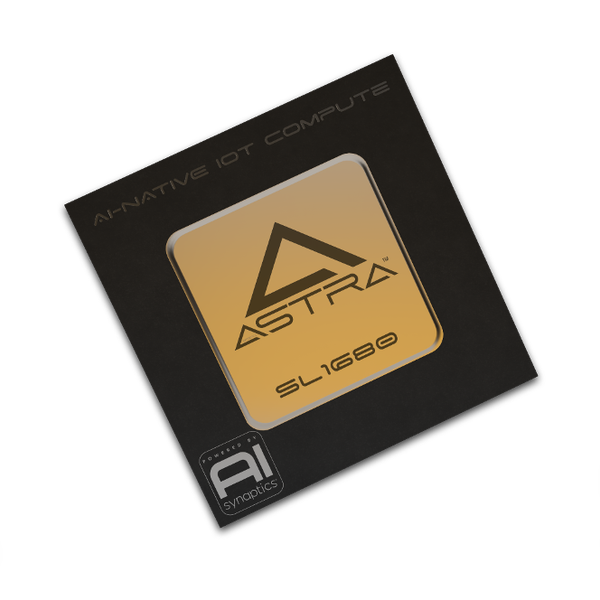At the recent Embedded World 2024 conference, Synaptics introduced the Astra “AI-native” embedded technology program, building on its expertise in edge development to facilitate connections between computers, individuals, and products. Synaptics pioneered reactive feel-sensing technology in the 1980s and 1990s, utilizing basic neural systems to recognize patterns and gestures on touch sensors. Transitioning to the IoT domain in 2017, Synaptics expanded its horizons, culminating in the creation of Astra—an all-encompassing AI software tailored for high-caliber applications.
Astra’s arrival in the market aligns perfectly with the current landscape, offering features conducive to rapid deployment and analysis. While global AI initiatives garner significant attention, a subtle revolution is unfolding at the system’s edge. Certain scenarios necessitate swift analysis of diverse data types across multiple streams, making AI a pivotal element for integrated processing systems. Machine learning algorithms excel at pattern-matching tasks of this nature, outperforming traditional rule-based programming solutions at scale. Developers are keen on implementing AI inference algorithms on compact embedded processors to yield meaningful insights at the dataset level, eliminating the costs, complexities, delays, and privacy concerns associated with transmitting data to cloud services.
The realm of Edge AI demands cutting-edge, high-performance platforms purpose-built for embedded computing, featuring optimized performance, power efficiency, networking capabilities, I/O functionalities, and cost-effectiveness. Essential components for embedded AI platforms include accelerated SoC hardware, a comprehensive suite of platform software, standardized wireless connectivity, a robust AI framework, and a thriving partner ecosystem. Let’s delve into how Astra aligns with this vision as depicted in Synaptics’ overview.
The Astra platform, as per Synaptics, encompasses all aspects of AI for the IoT.
SoC Hardware (Compute Solutions)
At launch, the Astra silicon lineup comprises three SoCs equipped with Arm Cortex-A processors, each integrated with a GPU and a full array of I/O options. Tailored to IoT requirements, the SoC configurations reflect a nuanced understanding of edge platform needs, catering to scenarios ranging from basic functions with light GPU acceleration to high-performance applications demanding NPU and GPU acceleration. Additionally, all SL-Series SoCs feature hardware-accelerated security, video, graphics, and audio capabilities.
The Synaptics SL-Series of chips offers various models tailored for distinct applications.
The SL-Series processors are currently available, with Synaptics planning to expand the Astra product range later this year by introducing the SR-Series of microcontroller-based SoCs. These power-efficient AI-native chips, leveraging the same AI frameworks as the SL-Series, enable cost-effective, battery-powered applications within the same AI ecosystem.
Synaptics provides the Astra Machina Foundation Series evaluation kit for prototyping, featuring a modular design for wireless connectivity, debugging, and I/O expansion, facilitating seamless integration with core modules and daughter cards for each SL-Series chip.
Platform Software (Unified Software Experience)
Astra’s GitHub repository hosts a comprehensive collection of open-source software for the platform, including Yocto Linux, the Astra SDK, the SyNAP toolchain, documentation, and developer guides. The concept of unified software entails consolidating all platform software and tools in a single accessible location, ensuring an open-source environment.
The Astra and Machina Foundation evaluation kit streamline the onboarding process for new users, with a pre-installed Linux distribution booting from onboard eMMC flash memory post-hardware configuration. Developers can swiftly set up the toolchain package, download pre-built system images, and commence application development. Leveraging pre-converted neural networks or custom neural networks compiled using the SyNAP toolkit, developers can promptly create AI applications.
AI Framework
Synaptics boasts a rich history of integrating AI methodologies into multimodal AI applications. Five years ago, the company introduced the Synaptics Neural Network Acceleration and Processing toolchain to support edge AI on high-performance multimedia chips like AudioSmart and VideoSmart. This forms the core of Astra’s AI framework, converting neural networks from original formats (e.g., TensorFlow Lite and ONNX) into executable representations optimized for target hardware, including specific NPUs and GPUs. Model quantization, reducing model precision for enhanced computational efficiency, is optionally applied during conversion.
At Embedded World 2024, the Astra team showcased the process by deploying YOLO models (for face detection) in TensorFlow Lite and ONNX formats, running them on the Astra Machina Eval Kit, and leveraging SyNAP to achieve substantial latency improvements. SyNAP serves as a mature, open-access edge AI developer toolchain interfacing with industry-standard frameworks.
Wireless Connectivity
Synaptics’ wireless portfolio offers robust solutions encompassing Wi-Fi (including 6E), Bluetooth, Thread, and Zigbee technologies. For prototyping purposes, the Astra Machina I/O board currently supports M. Three Wi-Fi and Bluetooth combination modules within its 2 slots.
In consumer applications, Matter over Wi-Fi or Thread is recommended by Moore Insights & Strategy. Synaptics, a member of both organizations, provides comprehensive hardware and software implementations for Matter and Thread. While Matter is currently supported by the Machina platform over Wi-Fi, Matter over Thread compatibility hinges on Machina incorporating a combo module based on SYN4381 or SYN4382 Wi-Fi, Bluetooth, and Thread (802.15.4) chips. Thread support is anticipated in the near future as these components become readily available.
Partner Ecosystem
Synaptics boasts a longstanding history of serving prominent OEMs and system platforms. The rapid evaluation of Astra within the Synaptics ecosystem is expected, leveraging established partnerships as Astra evolves. With extensive supply chain collaborations in place, Synaptics is well-positioned to scale production in response to market demand.
At Embedded World 2024, Synaptics unveiled its initial innovation partnerships, showcasing AI-enabled applications and integrated compute and connectivity solutions.
- EmbedUR — Image segmentation leveraging NPU-accelerated MCU for vision applications
- Astra powers FocusAI – Enterprise SaaS featuring edge AI for people detection and recognition
- Darwin Edge — Vital signs monitoring for healthcare
- Fraunhofer — upHear real-time super-wideband audio enhancement
- Matter demo — AMPAK system-on-module integrating the SL1620 SoC and SYN43711 Wi-Fi/BT combo chip
Conclusion
From an experimental feature to a foundational element of embedded platform architecture, Edge AI has evolved into a necessity. With IoT serving as the primary data source for training and inference, the demand for intelligent embedded devices is escalating. Astra stands out as a mature AI platform, leveraging Synaptics’ expertise in sensor technology and neural networks, bolstered by an extensive network presence and a robust partner ecosystem. Anticipated swift adoption, particularly in multimodal AI applications where Synaptics excels, underscores Astra’s potential in driving innovation in the Edge AI domain.










